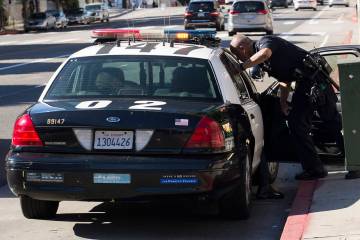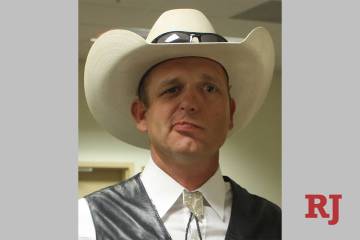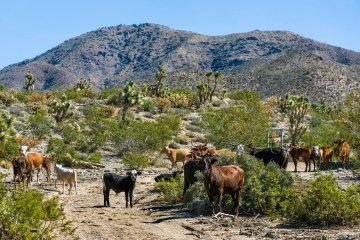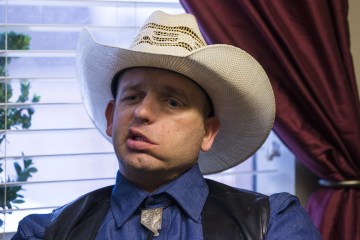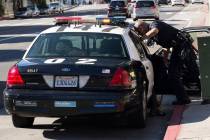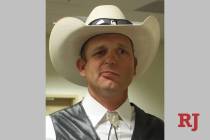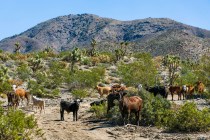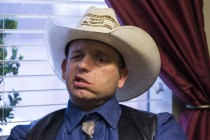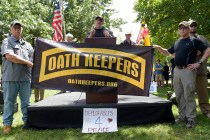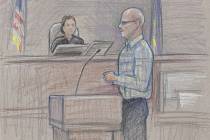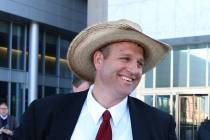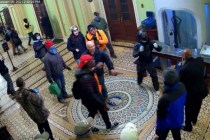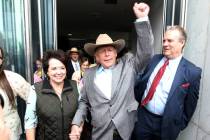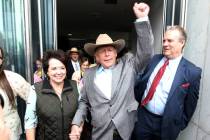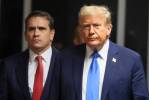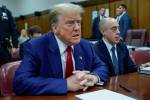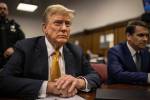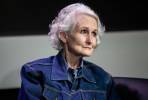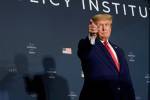First of 3 trials in Bunkerville standoff case starts Monday in Las Vegas
Gunfire wasn’t exchanged during an armed confrontation in Bunkerville three years ago, but the opposing sides will finally head to battle this week when the first trial opens in the case against rancher Cliven Bundy and his supporters.
The case pits the federal government against a group of men who view its agents as foreign invaders on their land, and the venue change, from open range to federal court, has done little to civilize that hostile dynamic. The clashes are expected to be just as fiery in the confines of a courtroom as they were on the sandy banks of Toquop Wash, where in April 2014 Bundy and his supporters were engaged in a dramatic standoff against Bureau of Land management agents who tried to round up the rancher’s cattle.
Bundy and the 16 others facing trial on charges in the 15-count indictment maintain they were exercising their First and Second Amendment rights to freely assemble and to bear arms. Federal prosecutors accuse them of staging a massive and unprecedented assault against law enforcement.
A jury will decide whose version of events to believe after a trial that is expected to be just as untamed as the plains of Southern Nevada where the trouble first began.
“It’s a political fight and a philosophical fight as much as it’s a legal fight,” said longtime Las Vegas defense attorney Tom Pitaro, who is not involved in the case.
A federal grand jury indicted the defendants on identical charges — including extortion, threats and assault — but prosecutors decided to try them in three groups: gunmen, leaders and midlevel organizers.
The six gunmen, considered the least culpable, are up first in what some lawyers consider to be the biggest Southern Nevada case in recent memory. Jury selection is scheduled to begin Monday in federal court in Las Vegas.
“Courtrooms are tough places to play out political theory,” Pitaro said. “Is this going to be a trial, or is this going to be political theater on either side?”
The stakes are particularly high for both sides, as nearly all of the defendants decided to force the government to prove its case at trial — increasing the cost of prosecution and risking longer prison sentences than they might have received if they reached a plea deal with the government.
UNIFIED DEFENDANTS
The internet’s ability to draw impassioned, libertarian supporters — to what was framed as a protest against federal overreach — roped in several people who did not previously know the Bundys and had no stake in the core dispute over cattle grazing fees. All six of the defendants in the first trial traveled to Bunkerville from out-of-state, guns in tow, because they feared their rights were being threatened.
Now, every day, for as much time as they’re granted, the 17 men awaiting trial head to the law library at Nevada Southern Detention Center in Pahrump and pore over the voluminous evidence the government has turned over to them in the case. They claim that when they receive their day in court, they will offer the public a different version of what transpired in Bunkerville three years ago.
“We are here, we’re unified, which is something that they underestimated,” Ammon Bundy, one of the rancher’s sons, said in a recent phone interview from jail. He and his brother Ryan both contend they are victims rather than perpetrators of a mass assault.
A court-ordered seal has prevented the public from accessing much of the evidence the government gathered in its investigation. But under federal law, prosecutors are required to turn over all evidence that could help a defendant prove his innocence, and Ammon Bundy — fresh off an acquittal in a similar case in Oregon – says he has plenty of material.
“When you see the evidence — it was an absolute lie that there was a whole bunch of guns and pointed at them,” Ammon Bundy said, referring to the federal agents.
He said the evidence instead includes recordings of BLM agents making statements such as, “I’ve got 110 rounds, and I’ll use every one of them.”
Prosecutors’ evidence includes pictures, made public in court filings, of two of the men in the first trial group pointing long guns through a crack in the jersey barrier on a highway bridge. Prosecutors are expected to argue that the position of these gunmen on higher ground served to escalate the situation and put the federal agents in fear for their lives.
The Bundys, both on principle and as a defense strategy, argue that the federal government does not have jurisdiction over the Bunkerville grazing allotment.
But those jurisdictional arguments are unlikely to take center stage in the first trial. Rather, defense attorneys are expected to focus on constitutional issues as they try to portray Richard Lovelin, Todd Engel, Gregory Burleson, Eric Parker, Scott Drexler and Steven Stewart as peaceful protesters. They are expected to attack, for example, the “First Amendment Area” federal officials cordoned off for protesters.
BURDEN ON RESOURCES
Preparation for the Bundy trials has effectively halted much other federal court business in Las Vegas as defense attorneys cannot adequately prepare for this case and others simultaneously.
A judge in another case recently described the Bundy trials as a “great burden on all defense resources in this district.”
The case similarly has presented a burden on prosecutorial resources. It was triggered by $1 million in unpaid fees Bundy owed the BLM for his use of the grazing allotment in Bunkerville. The government spent close to $1 million in contracting with cowboys for the cattle roundup alone. Overtime, investigative and prosecution costs are expected to significantly increase that figure.
Anticipating a high-profile trial, U.S. District Judge Gloria Navarro issued an order last week to keep jurors’ identities private. Court officials are preparing for a circus, as routine hearings in the case have attracted flocks of Bundy family members. Last week, at a pretrial hearing for Ryan Bundy, protesters stood outside the courthouse holding an American flag and the Gadsden flag — a symbol of the movement the Bundys and their associates espouse.
The Lloyd George U.S. Courthouse was abuzz last week in preparation, with officials reviewing safety procedures and discussing the possibility of a safety drill prior to the trial.
Members of the media and attorneys will be required to display special credentials, and a second security detector may be erected outside the courtroom. The trial will be held in the largest courtroom, on the seventh floor of the courthouse. Jury selection is expected to last several days.
Contact Jenny Wilson at jenwilson@reviewjournal.com or 702-384-8710. Follow @jennydwilson on Twitter.

Previous coverage
See Full coverage of the feud between the Bundy family and the BLM




